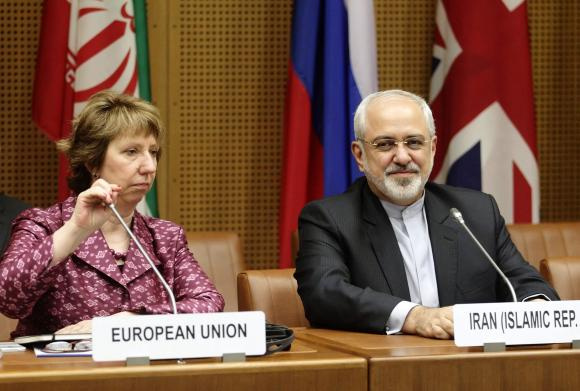Vienna-6 and the Red Lines

-This round of negotiations, which is the most critical one, has begun with the media propaganda of the other party and will continue as such.
-Western media has previously pointed out some differences between the two sides and attempted to highlight them including the issues of the number of centrifuges and the timing of the comprehensive agreement.
-Nonetheless, it is clear that there are differences between Iran and the P5+1 over nuclear issues and basically, if there were no differences, negotiations between the two sides would be meaningless.
-Based on the agreement reached by both sides since the coming to power of the new administration in Iran and the formation of the new nuclear team led by Mr. Zarif, the details of these negotiations should not be published until the final agreement is made because these details might impact the atmosphere of negotiations and trap them with media sensationalism.
-Therefore, many issues which are talked about with regard to the differences between Iran and the P+1 by the western media are mainly aimed at exerting pressure on Iran’s negotiating team which are unfortunately republished by some domestic press as well.
-This claim that there is little time and that the Islamic Republic of Iran must make difficult decisions during the remaining time attempts to implicate that Iran would be responsible if this round of negotiations does not succeed.
-Both Iran and the P5+1 have drawn red lines for themselves and ask each other to respect those red lines.
-Iran’s red line from the beginning was that it should be able to continue uranium enrichment in its own territory. This red line is now respected by the P5+1 and there is no attempt to bypass it.
-The latest report by Amano, the Director General of the IAEA, with regard to Iran’s nuclear program indicates that contrary to all concerns expressed by the opposition in Iran, enrichment continues as in the past and the centrifuges are running in the nuclear installations.
-What has happened by the US with regard to Iran’s enrichment is that, although the right to enrichment has not been officially recognized, this right has been given to Iran to continue enrichment inside its soil. The US has somehow pursued the same position with regard to Iran’s enrichment as it has done with other countries like Germany, Brazil, Argentina, … That position is ignoring the enrichment program.
-The red line drawn by the P5+1 regarding Iran’s nuclear program is Iran’s non-accessibility to nuclear arms. The Islamic Republic of Iran has carried out certain measures including transparency about its nuclear program, increasing supervision over its program and also the halting of 20% enrichment in order to gain the trust of the other side and has somehow respected the red line of the other party.
-Therefore, both parties have now reached the point that after many years of futile negotiations they should respect each other’s red lines. This is one step forward.
-Other differences between both sides are beyond the red lines and can be resolved. If there is enough determination by both sides, negotiators could certainly find a suitable solution with a win-win approach.
-The duration of the comprehensive nuclear agreement does not mean the execution time of this agreement, but rather the validity which this agreement could have.
-When it is said that the time of the comprehensive nuclear agreement must be 5 years or 20 years, it means that this agreement should be valid for 5 or 20 years otherwise the implementation of the agreement and the commitments of both sides including the lifting of sanctions or increasing supervision and IAEA inspections of Iran’s nuclear program may not take more than one year.
-Thus, the timing of the comprehensive nuclear agreement cannot be considered as a serious difference because the context of the comprehensive agreement is more important than its timing.
-What the Islamic Republic of Iran has stressed about the centrifuges is based on the need of the country and it cannot be ignored.
-The Bushehr power plant needs 30 tons of enriched uranium in a year to produce 1000 megawatts of electricity. For this amount of uranium, 50000 to 53000 centrifuges must be active. This is besides the second phase of the Bushehr power plant or other power plants which are planned to be launched for the production of electricity in the country.
-Based on the contract which Russia has signed with Iran, it is committed to provide the needed uranium for the activities of the Bushehr power plant. Hence, after that the Islamic Republic of Iran must provide its needed fuel by itself and that would be possible with the active centrifuges in our nuclear installations.

